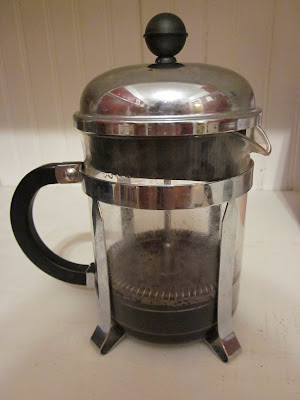The glaciers are melting, the air is filling with greenhouse gases, our fuel reserves are on their way to being depleted, the economy is crippled, and the future is uncertain. Everywhere I go, I hear this forecast of doom. I was even pointed to a blog where eco concious parents where debating whether it was responsible to bring a child into such a troubled world. The idea of intelligent people refusing to reproduce out of fear and despair is truly depressing. One might ask what kind of a terrible time and place are we living in where we feel the need to make decisions like that. But I would argue that in spite of our troubles the future is not bleak and that in fact we are entering a period of tremendous potential.
The economic and eco crisis that we are experiencing is forcing us to change the way that we live and the way that we view the world. I say, good! We needed this kick in the ass to make us realize that the American Dream is no longer sustainable or satisfying. We have less money to spend, we have less fuel, and we cant ignore the fact that every bit of waste that we produce impacts the environment. But neighbors this is not something to fear, it is something to embrace, for by making the changes that we are being forced into we may discover a healthier, happier, more connected way of life.

The teaching garden at The Good Shepherd Center in Wallingford
Ever since the stock market crashed and the bubble burst I have seen gardens popping up in countless backyards and public lots. Thousands of people are rediscovering the joy of growing their own food, helping their neighbors and being able to provide for their families in a very real way. The DIY movement has taken off, there is a renewed interest in traditional food preservation, forgotten Americana, and slowing down the pace of life in general. Permaculture, Sustainability, Locavore, and Slow Food are becoming common buzz words. All of these changes tie communities together. Privation is leading us to draw closer to our friends and families, to eschew materialism, to focus on quality over quantity, and to be more aware of the world around us. In my mind this cannot help but increase our quality of life for we have certainly all already learned that a big house, a fancy car, and money to burn does not equal happiness.

Demonstration on fermenting vegetables at the Wallingford Urban Harvest Fair

Artist's design for a sustainable, eco concious Cul de sac at the 2010 Northwest Permaculture Conference

Community garden in a previously unused bit of space outside of Om Culture in Wallingford

Helen showing off her home garden in Wallingford, where she grows and sells produce to neighbors
So be excited about bringing a child into this world because they will have so much to offer each other. My only real fear is that once the economy recovers people will forget what they have learned and fall back into the same senseless mass consumption that has characterized the American way of life for far too long. I guess the best that we can do is build strong foundations for a better life now and hope that they will continue to stand come what may.




